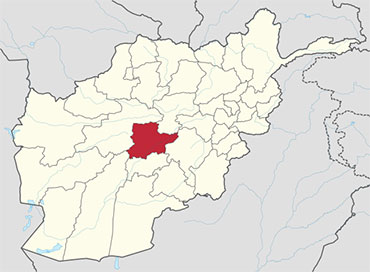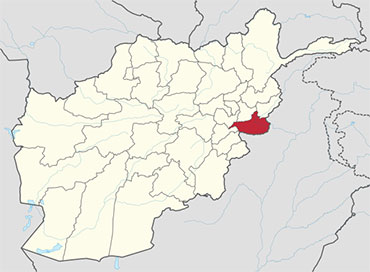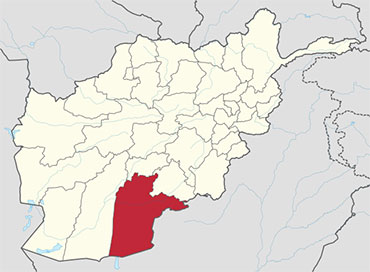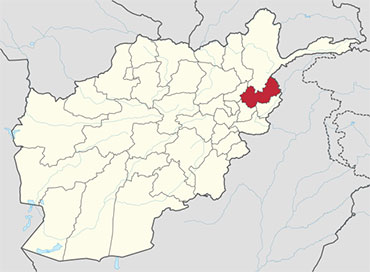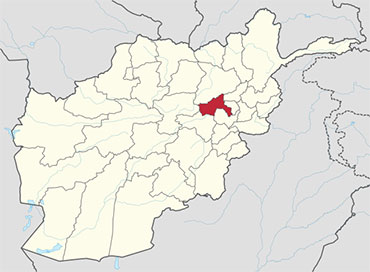 Parwan also spelled Parvān, is one of the 34 provinces of Afghanistan. It has a population of about 631,600, which is multi-ethnic and mostly a rural society. The province is divided into ten districts. The town of Charikar serves as the provincial capital.
Parwan also spelled Parvān, is one of the 34 provinces of Afghanistan. It has a population of about 631,600, which is multi-ethnic and mostly a rural society. The province is divided into ten districts. The town of Charikar serves as the provincial capital.
Located north of Kabul Province and south of Baghlan Province, it was once the name of an ancient town in the Hindu Kush mountains.
Parwan is one of the secured provinces of Afghanistan. However, occasional militant attacks are reported but they are usually minor. Security incidents in Parwan mostly involve grenade attacks on the residences of government officials or roadside bombs. Bagram Air Base, which is one of the largest U.S.-military bases in Afghanistan, is located in Parwan.
History
In 329 BC, Alexander the Great founded the settlement of Parwan as his Alexandria of the Caucasus. It was conquered by Arab Muslims in 792 AD. In 1221, the province was the site of the battle between the invading Mongols, led by Genghis Khan, and the Khwarezmian Empire led by Jalal ad-Din Mingburnu, where the Mongols were defeated. The famous Moroccan traveler and scholar, Ibn Battuta, visiting the area in 1333 writes:
“We halted next at a place called Banj Hir (Panjshir), which means “Five Mountains,” where there was once a fine and populous city built on a great river with blue water like the sea. This country was devastated by Tinkiz, the king of the Tatars, and has not been inhabited since. We came to a mountain called Pashay, where there is a convent of the Shaykh Ata Awliya, which means “Father of the Saints.” He is also called Sisad Salah, which is the Persian for “three hundred years,” because they say that he is three hundred and fifty years old. They have a very high opinion of him and come to visit him from the towns and villages, and sultans and princesses visit him too. He received us with honor and made us his guests. We encamped by a river near his convent and went to see him, and when I saluted him he embraced me. His skin is fresh and smoother than any I have seen; anyone seeing him would take him to be fifty years old. He told me that he grew new hair and teeth every hundred years. I had some doubts about him, however, and God knows how much truth there is in what he says. We travelled thence to Parwan, where I met the amir Buruntayh. He treated me well and wrote to his representatives at Ghazna enjoining them to show me honour. We went on to the village of Charkh , it being now summer, and from there to the town of Ghazna. This is the town of the famous warrior-sultan Mahmud ibn Sabuktagin, one of the greatest of rulers, who made frequent raids into India and captured cities and fortresses there.”
The area was subsequently ruled by the Timurids and Mughals until Ahmad Shah Durrani made it part of the Durrani Empire in 1747. In 1840, Parwan was the site of a major battle in the First Anglo-Afghan War where the invading British were defeated. Parwan’s modern history began with the construction of a new textile factory in the town of Jabal Saraj in 1937. Parwan was involved in the Soviet war in Afghanistan as some of the fiercest fighting took place in the area. In the 1990s it was the site of heavy resistance against the Taliban.
Recent History
Since the removal of the Taliban in late 2001, the United States Armed Forces took control of Bagram Air Base and began using it as one of their main bases in Afghanistan. There is a Provincial Reconstruction Team (PRT) led by South Korea helping the locals with development activities in the province. In mid-February 2011, five rocket-propelled grenades hit the newly built South Korean military base housing the provincial reconstruction team and civilian aid workers. No one was injured in the attack, but it came hours after a visit by South Korean Defense Minister Kim Kwan-jin, raising suspicions of Taliban involvement. The opening ceremony of the base was postponed indefinitely.
A plan to build a power plant in the province is under consideration. A large portion of Parwan’s economy relies on remittances from the Afghan diaspora living abroad.
Healthcare
The percentage of households with clean drinking water fell from 32% in 2005 to 11% in 2011. The percentage of births attended to by a skilled birth attendant increased from 4% in 2005 to 7% in 2011.
Demographics and geography
The total population of the province is about 631,600, which is multi-ethnic and mostly a rural society. According to the Naval Postgraduate School, the ethnic groups of the province are as follows: Pashtun, Tajik, Uzbek, Qizilbash, Kuchi, Hazara, and other minority groups. The Institute for the Study of War (ISW) states that “the main ethnic groups are Pashtuns and Tajiks, but there are small numbers of Uzbeks, Qizilbash and Hazaras as well.”
Districts
Parwan province is divided in to 10 districts.
| District | Population | Area |
|---|---|---|
| Bagram | 100,800 | |
| Charikar | 171,200 | |
| Ghorband | 94,100 | |
| Jabal Saraj | 62,100 | |
| Kohi Safi | 30,200 | |
| Salang | 25,300 | |
| Sayed Khel | 44,300 | |
| Shekh Ali | 24,000 | |
| Shinwari | 39,900 | |
| Surkhi Parsa | 39,700 |

